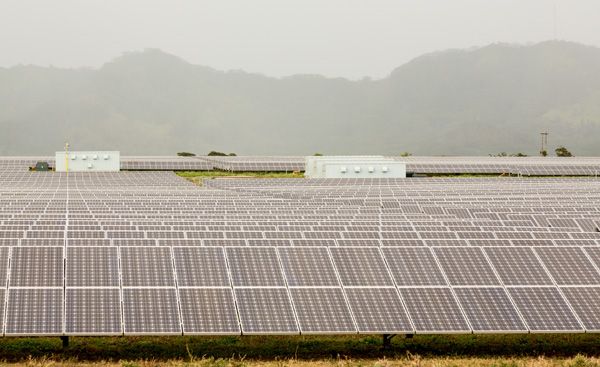How Does Hawaii Solar Tax Credit Work?
Hawaii is a great place to take advantage of solar energy and its generous tax credits. From homeowners to business owners, there are plenty of ways to save money on your taxes by investing in solar panels. In this article, we’ll explain what the Hawaii Solar Tax Credit is, how it works, and how you can make the most of it.
The Hawai‘i State Energy Office (HSEO) offers a Solar Tax Credit for individuals and businesses that install solar photovoltaic systems or renewable energy systems on their property. The credit allows for up to 35% of the cost of the system* to be applied towards reducing your state income taxes. The amount of the credit depends on several factors, including whether you are an individual or business, when you installed your system—whether before or after December 31st, 2020—and which type of system you have installed—for example, a rooftop-mounted system or a collectible-based system.
Individuals who install rooftop PV systems that have been connected to the utility grid prior to December 31st can get up to $5,000 in credits while those who install after that date can get up to $3,250 in credits. For business owners installing non-rooftop PV systems with qualified equipment prior to December 31st , 2021 they can get up to $50,000 in credits while those who install later than this date will receive up to $25,000 in credits. Collectible-based systems are eligible for up to 50 percent of their installation costs for both individuals and businesses regardless of when they had their systems installed.
What Is The Hawaii Solar Tax Credit?
When it comes to saving money on your energy bills, nothing beats installing solar panels on your home.
The HSEO also offers additional incentives and rebates related to solar installations such as rebates on solar water heating appliances or PERC batteries used for off-grid electrical storage applications.
To make sure you get your Solar Tax Credit from Hawaii State Income Taxes quickly and efficiently it is important that you keep all documentation related to your system installation including receipts and permits. You must also register your system with HIenergy within 90 days of installation using the online form. Additionally if filing as a business make sure you include Form N-342A “Hawaii Investment Tax Credits” with your original tax return documents .
The Hawaii Solar Tax Credit Explained
To maximize the benefits of Hawaii’s solar tax credits and other programs, be sure to consider a few factors. First, take advantage of available incentives and rebates that are available at the local level, as well as federal incentives which may soon expire.
Second, make sure to keep all documentation related to your system installation including receipts and permits so you can easily file for your solar tax credit when the time comes. Third, consider alternative financing options such as leasing or power purchase agreements if upfront capital is needed before making any out-of-pocket payments.
Finally, do your research carefully and make sure you understand all the terms and conditions involved with your solar project before signing on the dotted line! With this knowledge in hand, taking full advantage of Hawaii’s Solar Tax Credit should be a breeze!
Absolutely! Hawaii is an ideal place to take advantage of solar energy, and it’s also a great place to capitalize on the various solar tax credits. Residents of The Aloha State can reap a variety of incentives and potential tax deductions when they invest in solar panel installation, including the lucrative Hawaii Solar Tax Credit. But how exactly do these incentives work?
Who Is Eligible For The Hawaii Solar Tax Credit?
Do you want to reduce the cost of your solar installation? If so, the Hawaii Solar Tax Credit could be an excellent choice for you. This credit is available to any taxpayer who installs solar on their primary residence or second home in Hawaii.
Hawaii has some of the most traditionally expensive utility rates in the nation, so the Hawaii Solar Tax Credit exists to incentivize homeowners and businesses to invest in solar. This credit reduces your state income taxes by 35 percent of your approved system cost up to a maximum value of $5000 per system. Additionally, single-family residential installations are exempt from paying excise taxes on their system as well.
In order to make sure you get every benefit available, making sure you obtain all necessary documentation for installation is essential. All receipts for labor and equipment should be kept on hand for filing purposes when claiming these credits come tax time. Furthermore, there may be additional federal credits or local incentives that can help offset the cost even more; doing research prior to installation will ensure you don’t miss out on key tax savings.
When looking into financing for your project, various options exist such as traditional home loans, leasing agreements, and power purchase agreements (PPAs). These methods give you different levels of responsibility depending on what suits your needs best. If interested in leasing a solar system, any excess energy production can potentially lower your monthly bills while still gaining access to reliable power sources during outages.
The Hawaii Solar Tax Credit Explained
It’s important to note that savings noticed with these incentives can vary depending on multiple factors such as house size and where it is located geographically within Hawaii due to differences in shade and ambient temperature which affects efficiency levels. When taken into consideration with proper maintenance strategies like cleaning off dust accumulation regularly and checking connection wires often, overall returns on investment can see drastic improvement.
How Much Is The Hawaii Federal Solar Tax Credit?
The Hawaii Solar Tax Credit is a great way to reduce the cost of installing solar on your home or business. The credit is available for both residential and commercial systems, and it can be claimed on your state income tax credit return. The credit is 30% of the cost of the system, up to $5,000. This means that you could potentially save up to $3,000 on the cost of a solar system installation!
How Does The Solar Tax Credit Work If I Don’t Owe Taxes?
If you’re like most people, you probably have a lot of questions about the solar tax credit. What is it, and how does it work? The solar tax credit is available to anyone who purchases a solar panel system. This means that even if you don’t owe taxes currently, you can still take advantage of the solar tax credit by rolling it over to the next tax year.
The solar tax credit is only available for the purchase of new solar panel systems, not for the lease or power purchase agreements. This means that if you’re currently leasing or purchasing your panels from someone else, you won’t be able to take advantage of the solar tax credit. Finally, the solar tax credit is only available for residential and commercial solar panel systems – meaning that if you want to install a rooftop solar panel system in your home, this isn’t an option.
Now that we’ve answered all your questions about the solar tax credit, it’s time to get ready to take advantage of this incredible opportunity! The sooner you make your purchase, the better chance you have of receiving benefits from this generous program.
The bottom line is that homeowners in Hawaii have plenty of options available when deciding whether or not to invest in solar energy systems; regardless if they decide ultimately pursue this endeavor the many benefits from zeroing out electricity bills and government subsidies certainly cannot be overlooked. With a bit more research, taxpayers should have no issues capitalizing off available tax credits–like the expansive Hawaii Solar Tax Credit–and taking full advantage of them!
Is The Hawaii Solar Tax Credit Refundable?
If you’re looking to go solar, you may be wondering about the Hawaii Solar Tax Credit. This credit is available to residents of Hawaii and can be used to offset taxes that you owe on your solar power system. The credit is 26% of the cost of your system, which covers both the equipment and installation costs. In addition, this tax credit is available for both residential and commercial systems – so whether you’re looking to replace your old windows or install a brand new rooftop solar system, this credit will apply.
The maximum amount of the credit that you can receive is $5,000. If your system costs more than $5,000 in total (including equipment and installation costs), then you will only be able to claim a portion of the full $5,000 tax credit. For example, if your total system cost is $10,000 and you are eligible for a $4,500 tax credit, then you would only be able to claim $2,500 worth of the credit – or 33% of your total system cost.
If you have any leftover credits after applying them against your taxes owed, they will carry over into the next tax year. However, if at any point during the year you owe more in property taxes than credits still remaining on your account from previous years combined (a negative balance), then those credits are lost forever. Finally, as with all government incentives there is an expiration date – this one being December 31st 2019. So make sure that if you’re thinking about going solar in Hawaii that it’s definitely on your radar!
In addition many local Hawaiian Energy providers like Haleakala Solar & Roofing offer alternative financing options like leasing programs or power purchase agreements that allow customers access upfront capital for installation costs before having any out-of-pocket payments so its worth exploring these options if you’re looking for some help covering expenses associated with installing PV systems in Hawaii . So don’t wait too long – start taking advantage now! With federal incentives set expire soon and state tax credits available — now is definitely the time maximize savings through solar investments !











